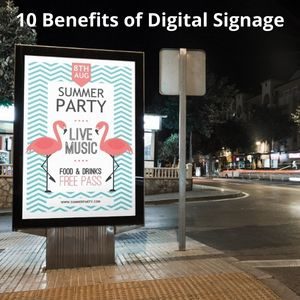The perfect music can induce a feeling of calmness.
Spas are the places where an individual seeks maximum relaxation and comfort. It is essential to create an environment in a spa that promotes the healing of the soul, mind, body and spirit, as well as the release of muscle soreness.
The body is driven to obtain a sense of calmness with proper tones, music, rhythm, and background music for spa, and that is why the right music is extremely important to improve the consumer experience in a spa!
Not only in spa treatments, but the right music also enriches the spiritual zone during Yoga. It adds to the inward calm that is achieved by Yoga asanas. The breathing in time with entrancing music and the movements cadenced by the relaxing sound creates a sense of extreme relaxation.
What Is The Purpose Of Music In A Spa?
Making an excellent choice of background music for a spa will help you to successfully excite your guests’ senses, allowing them to unconsciously experience the comfort and tranquillity that your Spa offers.
1. Creates the right atmosphere
The best background music for a spa can help the person relax, which involves the production of endorphins hormones that give the feeling of well-being. It creates the ideal atmosphere for relaxation, one that a customer expects from a spa.
2. Creates a calming environment
Ambient music has been shown to aid in the regulation of blood pressure and heart rate. The right background music for a spa creates a soothing and relaxing atmosphere that instantly eases the customer and provides a sense of calmness.
3. Enhances and complements the treatments offered
The background music for a spa is crucial since it controls all the customer’s senses. This helps in conjunction with other therapies and treatments the client is undergoing. It adds to the feeling of calmness and relaxation providing better results.
Types Of Music That Are Suitable In Spas
The peaceful and soothing background music for a spa is a favourite of many spa therapists. The music induces a meditative state of complete tranquillity, with tones that nourish a sense of joy and liberation in your mind, body, and spirit.
1. Genres that work best in a spa
The only goal of a spa is to provide relaxation, and the background music for the spa must be relaxing for that. Relaxing music in a classic salon or spa is usually lo-fi. Ambient music, booming waves, and pounding rain are among the sounds heard in certain spa music. Tunes from Indian Folk, Native American, Chinese, or Japanese music on acoustic instruments can also be included in background music for the spa.
2. Genres specific to treatments
Each of the treatments offered at the spa needs different kinds of background music for the spa. One kind of music will not work for all treatments like Swedish, Thai, Ayurveda, Yoga, etc. Research or take the help of professionals and choose the music genre specific to the treatment to ensure customer satisfaction.
3. Music with the right mood
Every spa has a different vibe, and it will need different background music. The music in your spa should be in accordance with the calming mood and should help the person come out of the stress and offer them a soothing feeling.
4. Music with the right tempo
To create a relaxing atmosphere in the spa, it is crucial to have a pleasant tempo. The tempo should be loud enough that people can talk comfortably without the voices of music prevailing.
How To Choose The Right Type Of Music For Your Spa
While there can be various styles of background music for spa, all of them can be ascribed to one type of music: relaxing music, which has many benefits.
1. Research genres that match the treatments offered.
Make the background music for the spa more personalised. Research specific genres of music that are in sync with the treatments selected by the client. This will help in the enhancement of the effects of treatment and create a more relaxing and soothing environment.
2. What kind of music do your customers expect with their treatments?
It is important to consider your clientele’s age and demographic while deciding the right background music for your spa. Inquire about your clients’ favourite music, take a survey, understand what type of music they prefer to listen to. This can help you gain a better knowledge of their musical preferences.
3. What moods and tempos provide the most relaxing and calming atmosphere?
Choose the background music for a spa that matches the right mood and tempo you are attempting to create in your spa. The exact rhythm with the right tempo can create a much better and calmer atmosphere that helps customers relax and enjoy the atmosphere.
What Are The Benefits of Music In Spa?
Music can be really beneficial for your customers, especially when they are relaxing during their massage therapy. One of the proven benefits of background music for a spa is improved client wellness. Music helps your customers get into the right state of mind while relaxing. When customers are relaxed during the session, they are more likely to return to your facility and also recommend their family & friends. A relaxed and satisfactory client is enough to accelerate your growth by bringing in more customer referrals.
What Alenka Media Can Do To Help You Play The Right Music In Your Spa?
Most people head to the spa with a very clear objective: to relax and rejuvenate. When they are relaxed and satisfied, they will love to come again with the thought of benefitting from your spa. Choosing the right music for your spa can do wonders in delivering exceptional customer results. However, there are different types of background music for a spa, making it tough to choose the right music for your spa.
At Alenka Media, we have a large selection of the best background music, specifically curated for spas. We offer multiple choices of genres and styles to customers and provide a simple solution to create the most soothing atmosphere. We strive to provide a cost-effective solution to spas with customised music for different treatment types and rooms.













